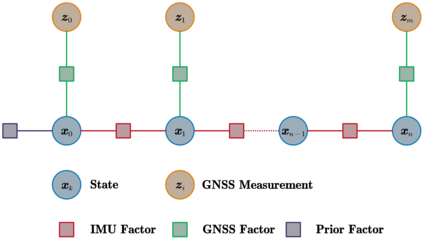Inertial measurement unit (IMU) preintegration is widely used in factor graph optimization (FGO); e.g., in visual-inertial navigation system and global navigation satellite system/inertial navigation system (GNSS/INS) integration. However, most existing IMU preintegration models ignore the Earth's rotation and lack delicate integration processes, and these limitations severely degrade the INS accuracy. In this study, we construct a refined IMU preintegration model that incorporates the Earth's rotation, and analytically compute the covariance and Jacobian matrix. To mitigate the impact caused by sensors other than IMU in the evaluation system, FGO-based GNSS/INS integration is adopted to quantitatively evaluate the accuracy of the refined preintegration. Compared to a classic filtering-based GNSS/INS integration baseline, the employed FGO-based integration using the refined preintegration yields the same accuracy. In contrast, the existing rough preintegration yields significant accuracy degradation. The performance difference between the refined and rough preintegration models can exceed 200% for an industrial-grade MEMS module and 10% for a consumer-grade MEMS chip. Clearly, the Earth's rotation is the major factor to be considered in IMU preintegration in order to maintain the IMU precision, even for a consumer-grade IMU.
翻译:在要素图形优化(FGO)中广泛使用内分泌单位(IMU)前整合;例如,在视觉-内皮导航系统和全球导航卫星系统/内皮导航系统(GNSS/INS)整合中广泛使用内分泌单位(IMU),但是,大多数现有的内分泌模型忽略了地球的旋转,缺乏微妙的整合过程,这些限制严重降低了INS的准确性。在本研究中,我们建造了一个精细的内分泌模型(IMU)前整合模型,其中包括地球的旋转,并在分析中计算共性差和Jacobian矩阵。为减轻除内分泌外的感应感应器的影响,采用FGOGO/内分泌系统(GNS/INS)整合,以定量评价经改进的内分泌系统/内分泌系统(GNSS/INS)的精度。但与典型的基于过滤性的GNSS/内分泌模型相比,所采用的基于FGO(FGO)的一体化基准也具有同样的准确性。相比之下,现有的粗集成前精度的内分泌精度差分辨性降解性降解。在工业级的MEMS模模模模模模模模件前IMS模和消费级的IMUIMS的精度上,在IMU的精确度上是主要的精确性。







